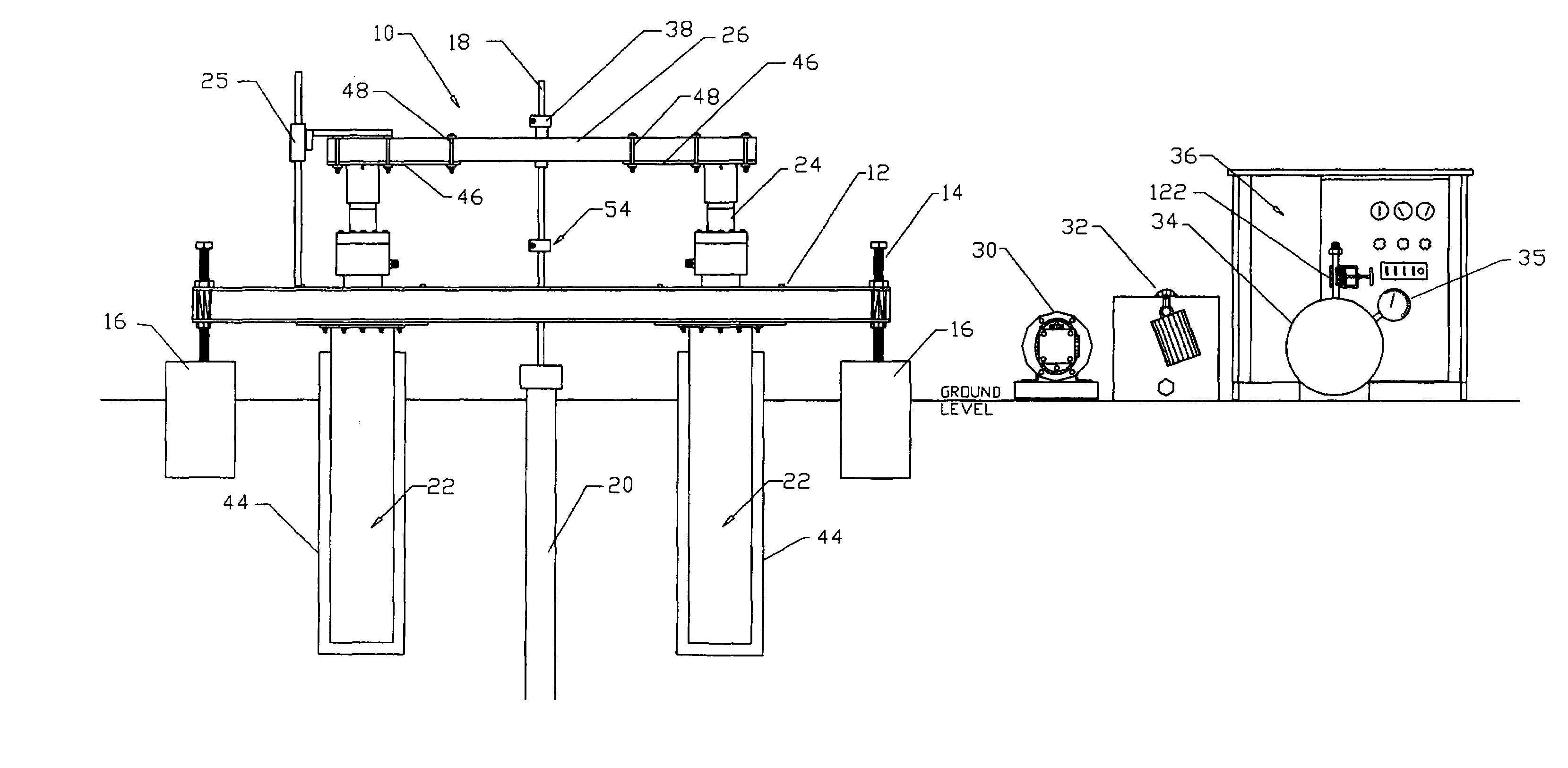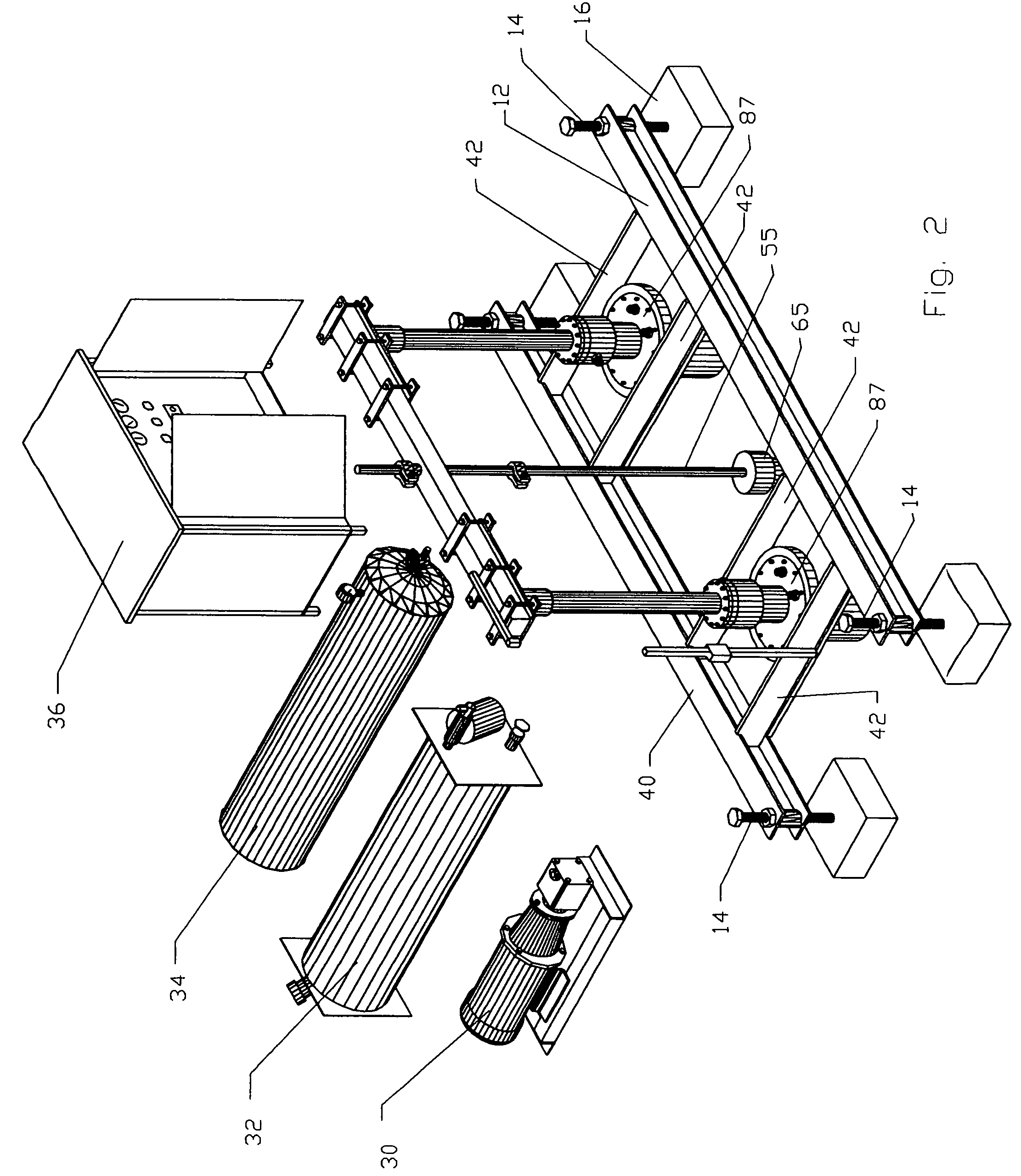Dual cylinder lift pump system and method
a pump system and double cylinder technology, applied in the direction of borehole/well accessories, survey, positive displacement liquid engine, etc., can solve the problem of extreme low horsepower requirements and achieve the effect of lowering horsepower requirements
- Summary
- Abstract
- Description
- Claims
- Application Information
AI Technical Summary
Benefits of technology
Problems solved by technology
Method used
Image
Examples
Embodiment Construction
[0025]Referring in detail to the drawings, there is shown by way of illustrative example in FIGS. 1 and 2 a pump jack system 10 for the extraction of oil and gas from subsurface formations which is broadly comprised of a base frame or platform 12 adjustably mounted by leveling screws 14 in concrete footings 16; and a conventional pump rod extends downwardly through an existing well casing 20 and is flanked on opposite sides by cylinder assemblies 22, each assembly 22 having a piston 24 mounted at its upper end to a cross bar 26. In the embodiment shown in FIGS. 1 to 4, a combination of hydraulic fluid and nitrogen gas are supplied to each cylinder 22 in a manner to be described from a hydraulic motor 30 connected to a reservoir 32 and a nitrogen supply 34. A suitable control panel 36 regulates the supply of hydraulic fluid to the cylinders 22 to control lifting and lowering of the pump rod via the cross bar 26 and pump rod clamps 38 which are adjustably mounted on the upper end of t...
PUM
 Login to View More
Login to View More Abstract
Description
Claims
Application Information
 Login to View More
Login to View More - R&D
- Intellectual Property
- Life Sciences
- Materials
- Tech Scout
- Unparalleled Data Quality
- Higher Quality Content
- 60% Fewer Hallucinations
Browse by: Latest US Patents, China's latest patents, Technical Efficacy Thesaurus, Application Domain, Technology Topic, Popular Technical Reports.
© 2025 PatSnap. All rights reserved.Legal|Privacy policy|Modern Slavery Act Transparency Statement|Sitemap|About US| Contact US: help@patsnap.com



